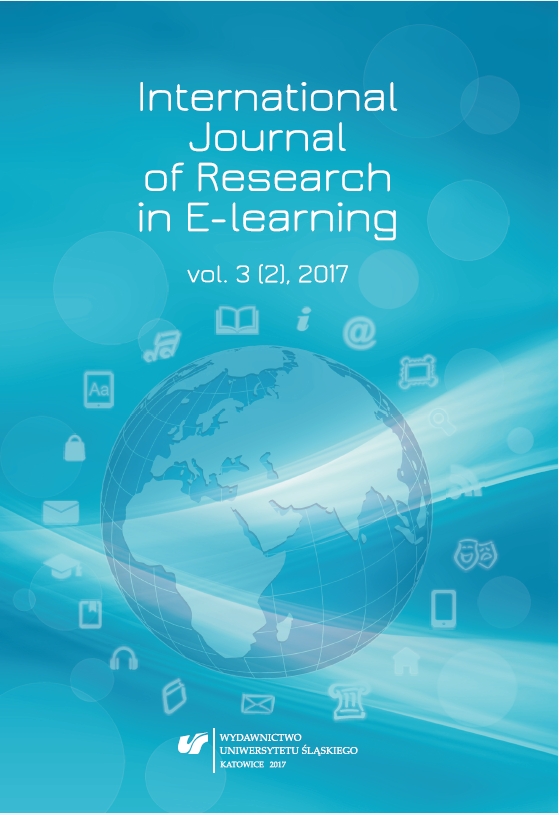Adams, R. & Khoo, S. (1996). Quest. Australian Council for Educational Research.
Boyle, E. A., Duffy, T. & Dunleavy, K. (2003). Learning styles and academic outcome: The validity and utility of Vermunt’s Inventory of Learning Styles in a British higher education setting. British Journal of Educational Psychology, 73, 267–290.
Branch, R. M. & Kopcha, T. J. (2014). Instructional design models. In Handbook of research on educational communications and technology (pp. 77–87). New York: Springer.
Branson, R. K., Rayner, G. T., Cox, J. L., Furman, J. P. & King, F. (1975). Interservice procedures for instructional systems development. Executive summary and model. DTIC Document.
Cybulski, J. L. & Linden, T. (2000). Learning systems design with UML and patterns. IEEE Transactions on Education, 43(4), 372–376.
Fatima, S. & Abdullah, S. (2013). Improving teaching methodology in system analysis and design using problem based learning for ABET. International Journal of Modern Education and Computer Science (IJMECS), 5(7), 60–68.
Gagné, R. M. (1985). The conditions of learning and theory of instruction. New York: Holt, Rinehart and Winston.
Izard, J. (2005). Overview of test construction. In Kenneth, N. R. (Ed.), Quantitative research methods in educational planning. Paris: UNESCO International Institute for Educational Planning.
Kiviniemi, M. T. (2014). Effects of a blended learning approach on student outcomes in a graduate- level public health course. BMC Medical Education, 14(1).
Knowlton, D. S. & Simms, J. (2010). Computer-based instruction and generative strategies: Conceptual framework & illustrative example. Computers in Human Behavior, 26(5), 996–1003.
Kock, N. 2006. Systems analysis & design fundamentals: A business process redesign approach. Sage Publications India.
Kyei-Blankson, L. & Godwyll, F. (2010). An examination of learning outcomes in HyFlex learning environments. In Proceedings from E-learn: World Conference on E-learning in Corporate, Government, Healthcare, and Higher Education (pp. 532-535). Chesapeake, VA: Association for the Advancement of Computing in Education (AACE).
McKay, E. (2000). Instructional strategies integrating the cognitive style construct: A meta-knowledge processing model (contextual components that facilitate spatial/logical task performance) (Doctoral dissertation). Melbourne: Deakin University. Accessed 12 February 2010. Retrieved from http://tux.lib.deakin.edu.au/adt-VDU/public/adt-VDU20061011.122556/.
Nawaz, A. & Kundi, G. M. (2010). Digital literacy: An analysis of the contemporary paradigms. International Journal of Science and Technology Education Research, 1(2), 19–29.
Porto, S. & Aje, J. (2004). A framework for operational decision-making in course development and delivery. Online Journal of Distance Learning Administration, 7(2), 199–215.
Rayner, S. & Cools, E. (2011). Style differences in cognition, learning, and management: Theory, research, and practice. New York: Routledge.
Riding, R. & Cheema, I. (1991). Cognitive styles: An overview and integration. Educational Psychology, 11(3–4), 193–215.
Riding, R. J. & Rayner, S. (1998). Cognitive styles and learning strategies: Understanding style differences in learning and behaviour. London: D. Fulton Publishers.
Rob, M. A. (2006). Development of project documentation: Key ingredient in teaching Systems Analysis and Design. Issues in Information Systems, 7(1), 83-87.
The Standish Group. 2004. Accessed 10 November 2008. Retrieved from http://www.standishgroup. com/sample_research.
Thomas, P. R. & McKay, J. B. (2010). Cognitive styles and instructional design in university learning. Learning and Individual Differences, 20(3), 197–202.
Topi, H., Valacich, J. S., Wright, R. T., Kaiser, K., Nunamaker Jr, J. F., Sipior, J. C. & De Vreede, G.-J. (2010). IS 2010: Curriculum guidelines for undergraduate degree programs in information systems. Communications of the Association for Information Systems, 26, 18.
Urtel, M. G. (2008). Assessing academic performance between traditional and distance education course formats. Educational Technology & Society, 11(1), 322–330.
Zhang, L.-F. (2004). Field-dependence/independence: cognitive style or perceptual ability?–– validating against thinking styles and academic achievement. Personality and Individual Differences, 37(6), 1295–1311.
Google Scholar


